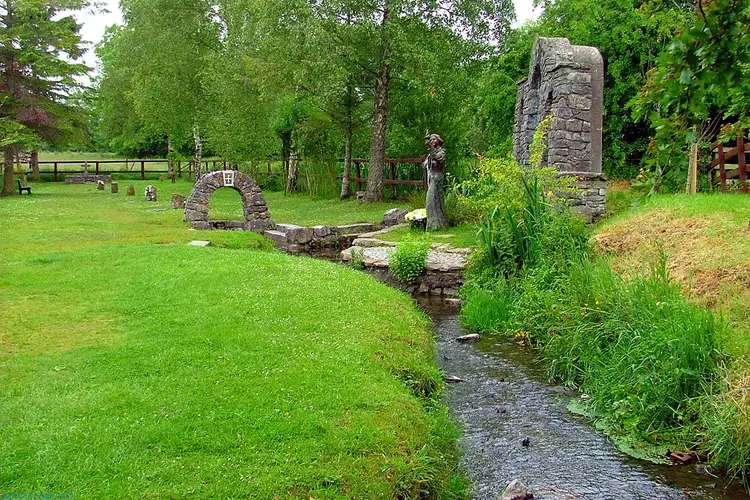Summary
Discovering Saint Brigid’s Well
Saint Brigid’s Well, located just outside Kildare Town proper, stands as one of the lesser-known yet profound attractions associated with Irish saints. Surprisingly, visitors to the nearby Irish National Stud often overlook this sacred site.
This oversight is indeed unfortunate. The well is not only a spiritual haven with deep historical roots but also carries a sense of reverence that has persisted through the ages. Despite its modern landscaping—successful in many respects yet perhaps overly polished—the aura of significance remains palpable. It is said that Brigid was revered as a goddess long before her canonization as a saint.
The Life of Saint Brigid
Saint Brigid is an intriguing historical figure. Legend has it that she was converted by Saint Patrick himself, fully immersing herself in ecclesiastical life. To escape marriage, she famously disfigured herself—a common element of her lore, although many artistic depictions do not reflect this account. Furthermore, tales of her maintaining a female companion suggest layers to her life that may not conform to typical narratives.
As tradition holds, Brigid became the abbess of a mixed-gender monastery in Kildare, even rising to the rank of bishop—a role that may strike many as unusual, particularly in this context. Yet, many present-day depictions of Brigid show her wielding a bishop’s staff, suggesting acceptance of her position.
Her legacy of veneration continues, with an eternal flame lit and tended by her followers. The connection to a pagan goddess named Brigantia raises intriguing questions about the intersections of faith and tradition.
Description of the Well
The wonder experienced during a visit to the Holy Well dedicated to Brigid, situated just south of Kildare Town, is undeniable.
At the end of a narrow country lane, this site presents itself as a quaint park. An enclosed spring—representing the well—feeds a short underground stream, which then flows through a stone gateway, meandering past a bronze statue of Brigid herself. The statue features her holding a crosier, adorned with a cross, bearing a flame, yet lacks a more conventional religious appearance. The site might once have served as a pagan worship area before any Christian influence arrived in Ireland.
Spiritual Significance
Remarkably, this location reflects a blend of mainstream Christian practices and folk customs. Visitors are encouraged to pray at designated stations marked by stones along the underground stream, although signs of traditional rituals—such as tokens or offerings tied to a nearby tree—are more pronounced. These offerings, made either to the saint or the genius loci, evoke a rich tapestry of spiritual beliefs.
Notably, one may observe an eclectic mix of items, including dream catchers, swaying gently in the breeze—indicating a fusion of traditions at this historic site.
Reasons to Visit
First and foremost, the Holy Well is an essential ancient site, now dedicated to the revered “Mary of the Gael”, still utilized for worship in ways that remain deeply folkloric. Consequently, it serves as a highly spiritual location for individuals of all beliefs—except perhaps those strictly adhering to an atheistic stance. Additionally, this site offers a unique glimpse into Irish Christianity without an overwhelming tourist presence, balancing respect for spiritual practices with the needs of visitors.
Ultimately, your experience at the site may vary. One could appreciate its design as mere garden art adorned with religious symbolism; however, such a view would fail to capture the profound essence of Saint Brigid’s Well.
In a Nutshell
- A spring and “Holy Well” that may have served as places of worship long before the advent of Christianity.
- Currently dedicated to the local Saint Brigid, who possibly held ancient goddess status for centuries prior.
- The well and its surroundings have been transformed into a small park, welcoming visitors while still possessing a timeless spiritual aura.




